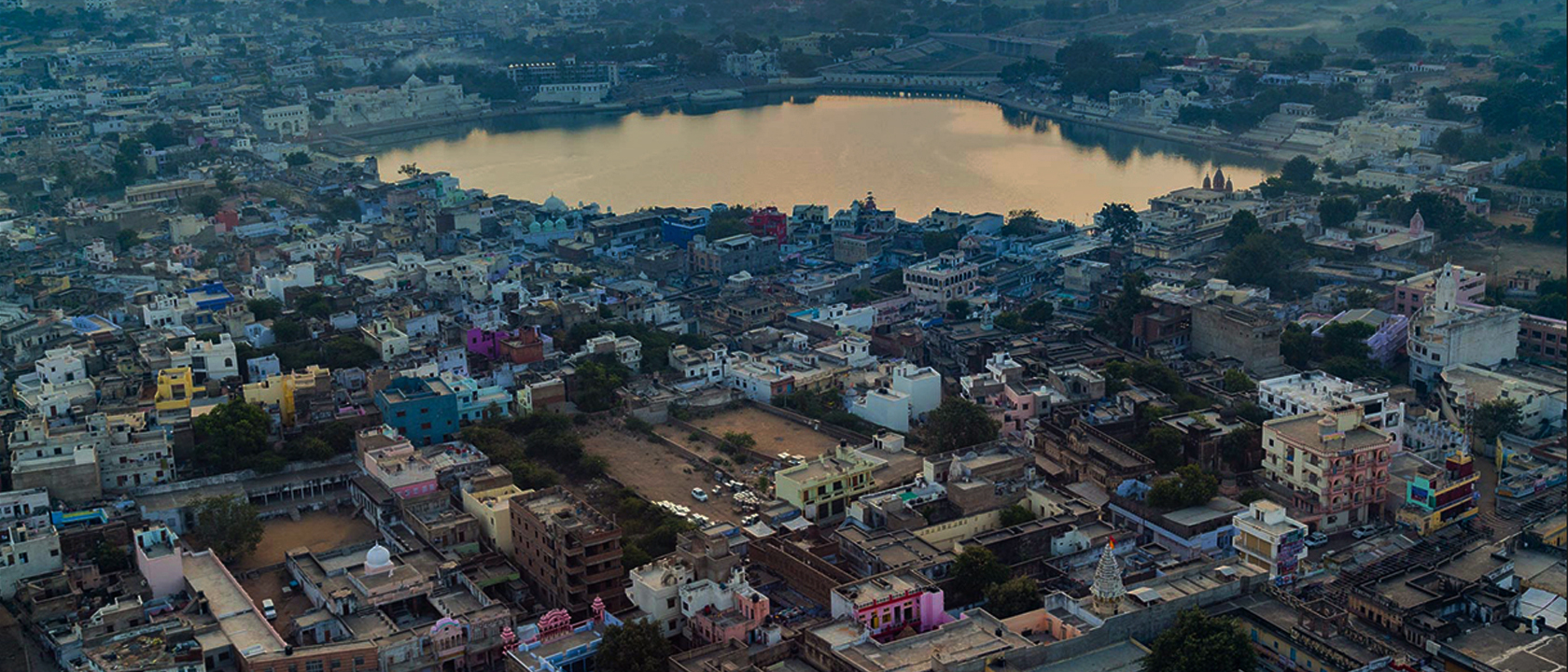
Pushkar is one of the oldest cities in India. Located to the northwest of Ajmer, the tranquil city of Pushkar is a
favoured destination for thousands of tourists and devotees flocking to Rajasthan. Situated at a height of 510 metres,
Pushkar is surrounded by hillocks on three sides. The ‘Nag Pahar’, literally meaning Snake Mountain forms a natural
border between Ajmer and Pushkar. Known as ‘the rose garden of Rajasthan’, the essence of the famous Pushkar rose is
exported all over the world. Along with an interesting mythological history, a legacy of timeless architectural
heritage makes Pushkar a fascinating city.
According to legends, Lord Brahma, believed to be the creator of the Universe dropped a lotus to the ground leading to
the immediate creation of a lake. He then decided to name the place after the flower, and thus the name, Pushkar. The
city of Pushkar is home to the only temple dedicated to Lord Brahma in the whole world. Hindus consider a journey to
Pushkar to be the ultimate pilgrimage that must be undertaken to attain salvation.
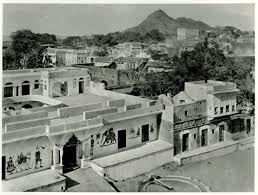
Pushkar is near some of the oldest geological structures in India. Microliths near Khera and Kaderi suggest the region was settled in ancient times. The Aravalli hills near it have yielded Mohanjodaro-style artifacts, but the connection is unclear as these items may have been transported later.[9] Sites near it have been sources of ancient Brahmi script inscriptions, considered pre-Ashokan near village Badli.[10] Local excavations have been a source of red ware and painted gray ware confirming ancient settlement.[9] Pushkar is mentioned in the Ramayana, the Mahabharata and the Puranas suggesting its significance in historical and religious tradition of Hinduism.[9][11] The town is mentioned in many texts dated to the 1st millennium.[8] These texts are not, however, historical. The earliest historical records relating to Pushkar and Ajmer are found in Islamic texts describing the raids and conquest of northwestern regions of the Indian subcontinent.[9] The region finds mention in Mohammad Ghori 1192 CE conquest related records, in the defeat of Prithviraj Chauhan. Thereafter, Pushkar and nearby Ajmer find mention in historical records related to Qutub-ud-din Aibak. It was regained by Rajput Hindus under the Chauhan of Ranthambhor in 1287, but regained by Delhi Sultanate in 1301 and remained in Muslim control for many centuries.[9] Akbar made the nearby Ajmer one of the provincial capitals, and it remained a part of Mughal Empire till 1712 CE. The Muslim rule brought destruction as well as cultural influences. Aurangzeb's army destroyed the Hindu temples along the lake. The cattle and camel trading tradition brought merchants from Afghanistan. With the collapse of Mughal Empire after Aurangzeb, Pushkar was regained by Hindus and became a part of Rathors of Marwar who rebuilt the temples and ghats.[5] The monuments and temples in Pushkar date to the Maratha or later period. In 1801, Pushkar came under the British rule and remained a part of the British Empire till 1947.

The annual Pushkar Camel Fair is popular with both locals as well as tourists and is a must visit. During the fair there are a myriad of arts and crafts exhibitions where local traders display their wares, at an event called Shilpgra. Folk dances from Rajasthan are popular around the country and the music of Rajasthan is pretty popular, and the locals in Pushkar love the traditional dance and music forms too. People in Pushkar celebrate all major festivals with merriment and revelry. The cuisine of Pushkar is largely vegetarian with famous dishes like poha and malpua a frequent inclusion in their everyday meals.
Since it is located in Rajasthan, the overall region is quite hot and in the summer months temperatures reach 45 degrees Celcius and up. Owing to this, Pushkar is great in the winter months when the sunlight is at pleasant levels and the crisp air makes sightseeing in Pushkar a pleasant experience. Daytime is perfect to explore the multitude of temples that populate the city of Pushkar as the weather is warm and pleasant, but the nights can get a little chilly for those not accustomed to the typical Rajasthani weather. Even in the winters however, the sun can get a little harsh so carry sunscreen and umbrellas.

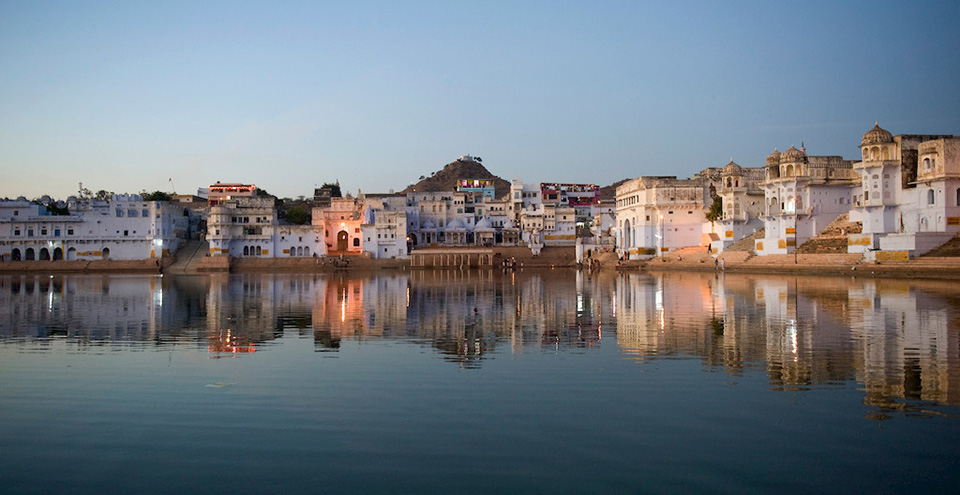
According to Hindu scriptures, the sacred Pushkar Lake is described as ‘Tirtha Raj’, the king of all pilgrimage sites. No pilgrimage is considered to be complete without a dip in in the holy Pushkar Lake. Semi-circular in shape and about 8-10 metres deep, Pushkar Lake is surrounded by 52 bathing ghats and over 400 temples and is truly a magnificent sight to behold.
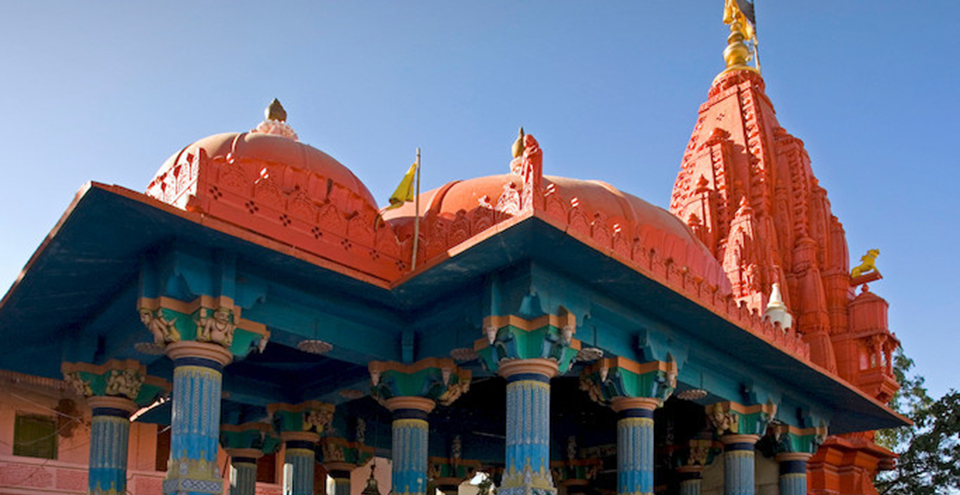
Nestled in the picturesque Pushkar valley beyond the Nangaparvat and Anasagar Lake, the Brahma temple holds a special place in the hearts of Indians. It is the only temple in the world dedicated to Lord Brahma. Built with marble and decorated with silver coins, this temple can be identified by its red spire and the image of a swan (considered sacred to Lord Brahma). The chaturmukhi (four faced) idol of Lord Brahma is housed in the inner sanctum. A marble statue of the sun god stands sentinel at the temple. Interestingly, while all the gods are shown bare footed, Surya is shown wearing ancient warrior’s boots.
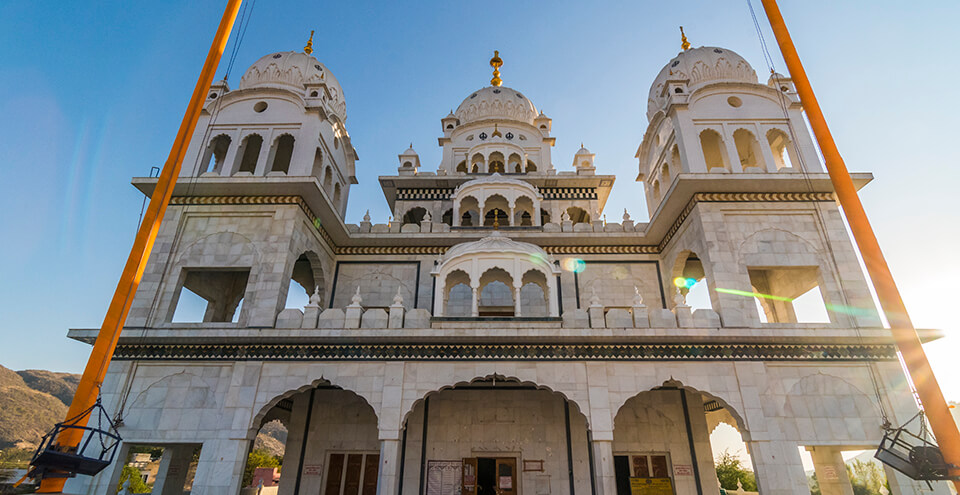
Gurudwara Singh Sabha, situated in the eastern part of Pushkar, was built in the beginning of the 19th century to commemorate the visits of the first and the tenth gurus- Guru Nanak Dev and Guru Govind Singhji.
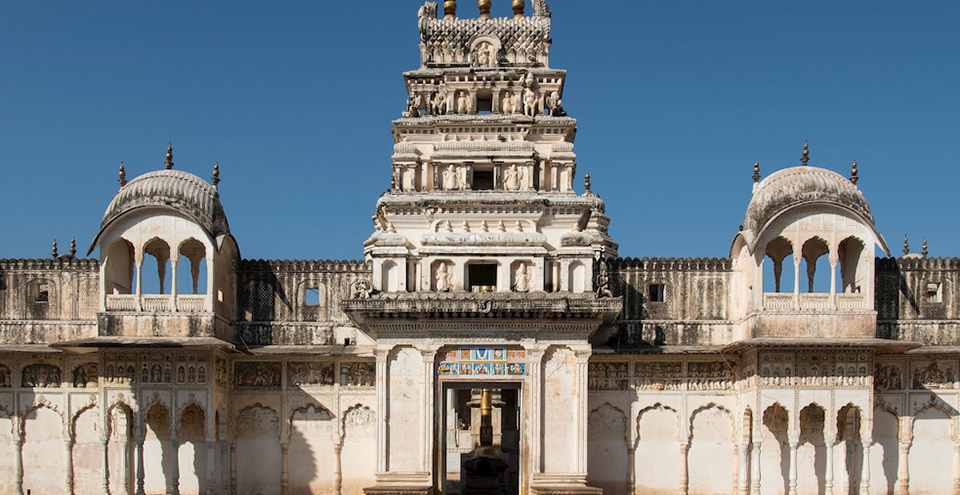
The gracious and conspicuous Rangji Temple is another popular shrine that witnesses thousands of pilgrims and tourists every year. The temple is dedicated to Lord Rangji, believed to be an incarnation of Lord Vishnu. The influence of South Indian style, Rajput style and Mughal style in the temple’s architecture is highly noticeable. The high-rising ‘Gopuram’, prevalent mainly in the temples present in South India is another feature of the temple that attracts visitors.
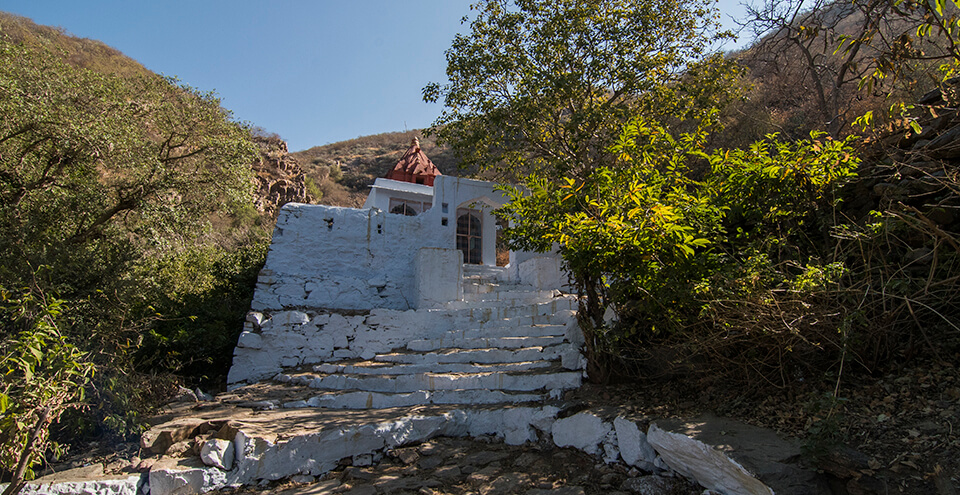
Sri Panchkund Shiva Temple is said to have been built by the five Pandavas. Located on the eastern edge of the town, this temple is around 2-3 kilometres from the lake.

The nearest airport to Pushkar is in Jaipur, which is 140 kilometres away. The airport is well-connected to major metropolitan cities like Delhi, Mumbai, kolkata.
Once you reach at the airport, you can hire a cab to reach Pushkar.
The journey from airport to the city will take approximately 3 hours. You can either pre-book a cab or hire from any of the taxi vendors outside the airport.

This is not a great option for long distance travellers. However, buses from Delhi to Ajmer and further to Pushkar are easily available. The Rajasthan State Road Transport Corporation runs deluxe and semi-deluxe buses (both air-conditioned and non-air-conditioned) connecting Ajmer to nearby cities and then transport you to Pushkar for a very nominal fare.

You will need to take a train to Ajmer and then take a 30-minute drive to Pushkar. The Ajmer railway station is well-connected with major Indian cities like Delhi, Mumbai, Jaipur, Allahabad, Lucknow, Kolkata, Bhopal, and Bangalore. Some of the most popular trains that run daily on this route are Ajmer Shatabdi and Ajmer Rajdhani. Apart from these, other trains are Chetak Express, Ali Sdah Express, Aravalli Express and Bsb Express. Once you reach at the station, you can hire a taxi to reach Pushkar.